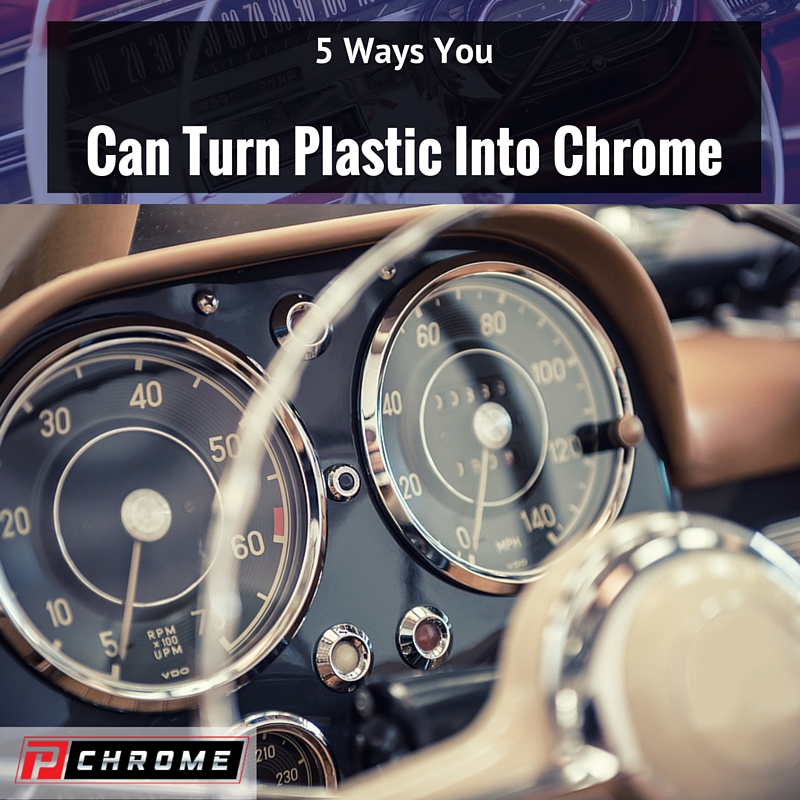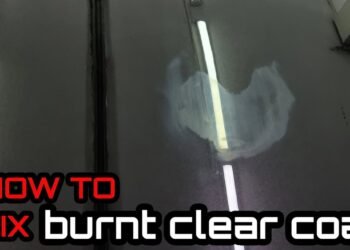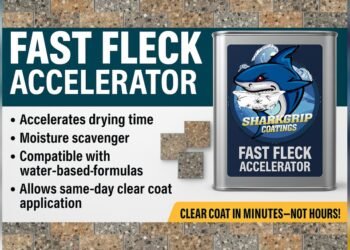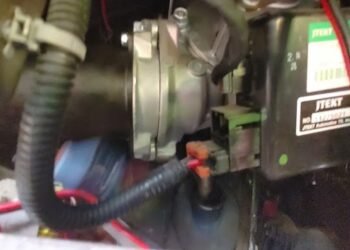Are you looking to change the look of your chrome plastic parts without spending a fortune on replacements? Painting over chrome plastic can give your wheels, trims, or accessories a fresh, custom appearance that stands out.
But here’s the catch—chrome surfaces are notoriously tricky to paint because of their smooth, shiny finish. If you skip the right steps, your new paint might peel or flake off quickly, leaving you frustrated. In this guide, you’ll learn how to prepare your chrome plastic properly and choose the best primers and paints to make your paint job last.
Keep reading, and you’ll transform your chrome pieces into sleek, stylish features you’ll be proud to show off.

Credit: www.youtube.com
Surface Cleaning
Cleaning the chrome plastic surface is the first step to successful painting. Dirt, grease, and dust can stop paint from sticking well. Proper cleaning makes the paint last longer and look smooth. Follow these simple steps to prepare the surface perfectly.
Wash With Soapy Water
Start by washing the chrome plastic with warm, soapy water. Use a soft cloth or sponge to avoid scratches. This removes dirt and grime from the surface. Rinse thoroughly with clean water. Let the surface dry completely before moving on.
Remove Wax And Grease
Next, use a wax and grease remover to clean the surface. This step is important because wax and grease block paint adhesion. Apply the remover on a clean cloth and wipe the surface well. Make sure no oily residue remains. This helps the primer and paint stick properly.
Final Dust Removal
Before painting, remove all dust particles. Use a tack cloth or a damp microfiber cloth for this. Dust can cause bumps and uneven paint. Carefully wipe the surface until it is perfectly clean. Now the chrome plastic is ready for sanding and painting.
Surface Preparation
Preparing the surface is a key step before painting over chrome plastic. A smooth, clean, and slightly rough surface helps paint stick better. This process improves durability and finish quality. Skipping preparation can lead to peeling or flaking paint. Focus on cleaning, sanding, and removing residues.
Sanding For Texture
Sanding creates a rough surface on the shiny chrome plastic. This roughness helps the paint grip better. Use gentle pressure to avoid damaging the plastic underneath. Sand evenly across the entire area for a consistent texture. This step is essential for long-lasting results.
Choosing The Right Sandpaper
Use fine to medium grit sandpaper between 400 and 600 grit. Coarser sandpaper may scratch the plastic too much. Finer grit creates enough texture without causing damage. Wet sanding can reduce dust and improve control. Always test on a small area first to ensure it works well.
Wiping Off Residue
After sanding, clean the surface thoroughly. Use a clean cloth with a wax and grease remover. This removes dust, oils, and sanding debris. A clean surface prevents paint bubbles and poor adhesion. Let the area dry completely before applying primer or paint.
Primer Application
Applying primer is a critical step when painting over chrome plastic. Primer helps the paint stick better and lasts longer. It creates a rough surface that paint can bond to. This step prevents peeling and flaking later on. Choosing the right primer and applying it properly ensures a smooth, durable finish.
Selecting Epoxy Or Etching Primer
Use epoxy or etching primer for chrome plastic. Epoxy primer sticks well and resists corrosion. Etching primer chemically bonds to smooth surfaces like chrome. Both types improve paint adhesion significantly. Choose one based on the product instructions and availability. Avoid regular primers as they may not stick properly.
Applying Multiple Coats
Apply at least two coats of primer to the surface. Each coat builds up a strong base for the paint. Spray thin, even layers to avoid runs or drips. Let each coat dry before applying the next. Multiple coats improve coverage and bonding strength. This step is vital for a long-lasting paint job.
Primer Drying And Curing
Allow primer to dry fully before painting. Drying times depend on the primer type and environment. Follow the manufacturer’s recommended drying time closely. After drying, some primers require curing for extra durability. Curing can take several hours or more. Proper drying and curing ensure the best paint adhesion and finish.

Credit: www.ebay.com
Paint Selection
Choosing the right paint is key to a lasting finish on chrome plastic. The surface needs paint that sticks well and looks smooth. Not all paints work the same on chrome plastic. Picking the proper paint type helps prevent peeling and flaking. The following guide covers the best paint options and color tips.
Automotive-grade Paint Options
Automotive-grade paints are designed for durability and strong adhesion. They resist chips and fading better than regular paints. These paints include base coats and clear coats for a glossy look. Using automotive paint ensures the finish lasts outdoors and on vehicles. Many professionals trust these paints for chrome plastic parts.
Enamel Vs Acrylic Paints
Enamel paints dry hard and offer a tough surface. They resist scratches well but take longer to dry. Acrylic paints dry quickly and clean up with water. They offer good color and finish but may not be as durable as enamel. Both types can work if used with the right primer. Choose based on your need for durability or ease of use.
Color Choice Tips
Pick colors that suit your style and the part’s use. Dark colors hide dirt and wear better. Light colors show flaws but brighten the look. Matte finishes reduce shine, while gloss adds brightness. Test spray a small area first to check color and coverage. Matching the paint to the original or desired look improves the final result.
Painting Techniques
Painting over chrome plastic requires careful techniques to achieve a smooth, lasting finish. Chrome surfaces are slick and shiny, making paint adhesion challenging. Proper application methods improve coverage and durability. Below are key techniques to use when painting over chrome plastic.
Applying Thin, Even Coats
Thin coats prevent drips and uneven texture. Hold the spray can or brush about 6 to 8 inches from the surface. Use steady, sweeping motions to apply paint evenly. Allow each coat to dry fully before adding the next layer. Multiple thin coats build color without adding bulk.
Avoiding Paint Runs
Paint runs happen when too much paint is applied at once. To avoid runs, spray or brush lightly and slowly. Keep the paint layer thin and controlled. If a run appears, stop painting and let it dry before sanding and fixing. Proper drying time is essential to prevent drips.
Layering For Durability
Layering strengthens the paint’s hold on chrome plastic. Start with a good primer designed for slick surfaces. Follow with several thin color coats for full coverage. Finish with a clear coat to protect the paint from scratches and fading. Each layer adds strength and improves longevity.
Clear Coat Finish
A clear coat finish is a vital step in painting over chrome plastic. It adds a protective layer that guards against scratches and weather damage. The clear coat also enhances the shine and depth of the paint color. This finish makes the surface smooth and glossy, giving a professional look. Applying a clear coat properly ensures long-lasting results and keeps the paint looking fresh.
Benefits Of Clear Coat
Clear coat shields the paint from UV rays and fading. It prevents chips and scratches on the painted surface. The finish also helps repel dirt and water, making cleaning easier. Clear coat gives a glossy, wet look that improves the appearance. It increases the durability of the paint job over time.
Applying Automotive Clear Coat
Start with a clean, dry surface before applying the clear coat. Spray the clear coat in thin, even layers to avoid runs or drips. Allow each coat to dry completely before adding the next layer. Use a well-ventilated area and wear protective gear. Follow the manufacturer’s instructions for the best results.
Curing And Polishing
Let the clear coat cure fully, usually 24 to 48 hours. Avoid touching or handling the surface during this time. After curing, polish the clear coat with fine rubbing compounds. This step removes any imperfections and enhances the shine. Finish with a wax to protect the polished surface and keep it smooth.
Common Challenges
Painting over chrome plastic presents unique challenges that require careful attention. The smooth, shiny surface of chrome makes paint adhesion difficult. Without proper steps, paint can peel or flake off quickly. Surface imperfections also become more visible after painting. Understanding these common issues helps ensure a better, longer-lasting finish.
Preventing Peeling And Flaking
Chrome plastic has a very smooth surface. Paint often struggles to stick properly. To prevent peeling, clean the surface thoroughly with soap and water. Follow by wiping with a wax and grease remover. Sand the chrome lightly to create a rough texture for paint to grip.
Use an epoxy or etching primer designed for chrome surfaces. Apply at least two thin coats of primer. Allow each coat to dry fully before adding the next. This creates a strong base and improves paint adhesion. Finish with multiple thin layers of high-quality paint to reduce flaking risk.
Dealing With Chrome Shine
The shiny chrome surface reflects light strongly. This can show through thin or uneven paint layers. Sanding the chrome dulls the shine and helps hide it under the paint. Use fine-grit sandpaper to smooth the surface without scratching deeply.
Primer also helps reduce the chrome’s reflective quality. Apply an opaque primer that covers the shine well. Use multiple thin paint coats for an even, solid color. Avoid thick coats that may drip or peel easily.
Handling Surface Imperfections
Chrome plastic often has small dents or scratches. These flaws become more visible after painting. Sand the surface to smooth minor imperfections. For deeper scratches, use a plastic filler before priming.
Apply filler sparingly and sand it smooth once dry. This creates a flat, even surface for painting. Inspect the surface carefully after each step. Proper preparation prevents imperfections from showing through the final paint.

Credit: pchrome.com
Alternative Methods
Exploring alternative methods to paint over chrome plastic offers options beyond traditional painting. These methods can simplify the process or provide different aesthetics. Choosing the right technique depends on your project goals and budget.
Chrome Wrapping Vs Painting
Chrome wrapping uses vinyl film to cover the chrome surface. It is faster and less messy than painting. Wrapping protects the original chrome underneath. Painting changes the surface permanently and needs more prep work. Wrapping can be removed easily without damage. Painting requires sanding and priming for good adhesion.
Using Chrome Delete Vinyl
Chrome delete vinyl is a popular choice to hide chrome parts. It comes in matte or gloss black finishes. The vinyl sticks directly to the chrome plastic. Application is simple and can be done at home. It gives a sleek, modern look without paint. Vinyl can be removed or replaced if needed. It also protects chrome from scratches and weather.
Pros And Cons
Painting offers a durable, long-lasting finish. It allows color customization and a smooth surface. But painting takes time and skill to avoid peeling. Wrapping is quicker and less permanent. It protects chrome and is easy to remove. However, wraps may peel or fade over time. Vinyl delete is budget-friendly and reversible. It may not last as long as paint under harsh conditions.
Tools And Materials
Painting over chrome plastic requires specific tools and materials for a smooth finish. Using the right supplies helps paint stick well and last longer. Preparation is key to avoid peeling or flaking later. Gather everything before starting to save time and avoid mistakes.
Essential Supplies List
- Soap and water for cleaning
- Wax and grease remover
- Fine grit sandpaper (400-600 grit)
- Epoxy or etching primer
- Automotive-grade enamel or acrylic paint
- Clear coat for protection
- Paintbrushes or spray paint cans
- Masking tape and plastic sheets
- Lint-free cloths
Recommended Brands
Choose brands known for quality and durability. For primer, brands like Dupli-Color and Rust-Oleum work well. Automotive paints from PPG and Valspar offer good coverage and adhesion. Clear coats from Krylon or SEM provide lasting protection. Using trusted brands ensures better results and fewer problems.
Safety Equipment
- Protective gloves to avoid skin contact
- Safety goggles to protect eyes
- Respirator mask for fumes and dust
- Long-sleeve clothing to cover skin
- Well-ventilated workspace or outdoor area
Wear safety gear at all times during the project. Chrome paint chemicals can irritate skin and lungs. Proper protection keeps you safe and comfortable.
Maintenance Tips
Proper maintenance keeps painted chrome plastic looking fresh and vibrant. Regular care prevents damage and extends the paint’s life. Follow simple steps to clean, repair, and protect your painted surfaces.
Cleaning Painted Chrome
Use a soft cloth and mild soap to clean painted chrome. Avoid harsh chemicals that can damage paint or primer. Rinse thoroughly with water and dry with a microfiber towel. Cleaning regularly removes dirt and prevents buildup. This keeps the paint smooth and shiny.
Scratch Repair
Small scratches can be fixed easily at home. Lightly sand the scratched area with fine-grit sandpaper. Clean the spot before applying touch-up paint. Use paint that matches your original color for best results. Let it dry fully, then apply a clear coat. This repairs the damage and protects the paint.
Long-term Care
Protect painted chrome from extreme weather and sunlight. Park in shaded areas or use car covers when possible. Avoid abrasive materials during washing or drying. Apply a wax or sealant every few months to keep the paint sealed. These steps preserve the finish and prevent fading or peeling over time.
Frequently Asked Questions
What Paint Will Stick To Chrome?
Use high-quality enamel, acrylic, or automotive-grade paint over chrome. Clean, sand, and apply an epoxy or etching primer first for proper adhesion.
Can You Paint On Chrome Without Sanding?
You can paint on chrome without sanding, but paint adhesion will be poor and prone to peeling. Sanding creates a rough surface for better paint grip. For durable results, clean thoroughly, sand lightly, apply an etching primer, then paint with automotive-grade paint.
Is It Better To Paint Or Wrap Chrome?
Wrapping chrome preserves its original finish and is reversible. Painting offers permanent color change but needs proper prep to avoid peeling. Choose wrapping for protection and easy removal; select painting for a custom, durable look. Both methods require careful application for best results.
What Removes Chrome From Plastic?
Use a plastic-safe chrome remover or sand the chrome surface gently. Then clean thoroughly before repainting or refinishing the plastic.
How Do I Prepare Chrome Plastic For Painting?
Clean with soap, sand lightly, then wipe with grease remover before priming.
Conclusion
Painting over chrome plastic requires patience and proper preparation. Clean the surface well to remove dirt and grease. Sand lightly to help the paint stick better. Use a good primer designed for chrome surfaces. Apply thin, even coats of paint for a smooth finish.
Finish with a clear coat for extra protection and shine. Taking these steps ensures your paint lasts longer and looks great. With care, you can change chrome plastic’s look effectively and easily.

















